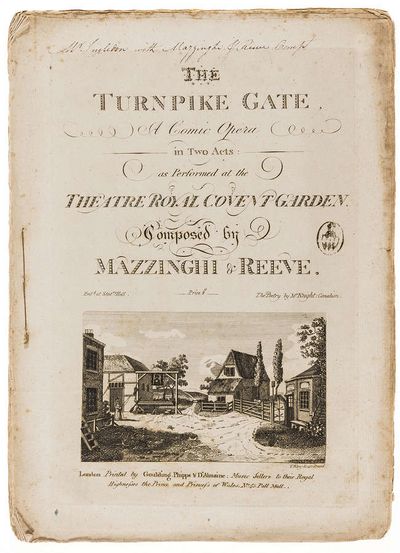Annotation:Turnpike Gate (4)
X:1 T:Turnpike Gate [4] M:6/8 L:1/8 R:Air Q:"Vivace" B:William Cahusac – The German Flute Preceptor (c. 1814, p. 13) Z:AK/Fiddler’s Companion K:D ded|f2d g2e|a2f ded|e2g B2e|c2A ded| f2d g2e|a2f ded|e2g ABc|d2z !fermata!:| aba|a2f f2f|g2e ede|f2d dcd|e2A ABc| d2d ede|f2f gfg|aba g2f|e3 aba| a2a aba|a3 aba|aba aba|a2 z||

We were highly delighted with the play. – The Farce was the Turnpike Gate – Sir Howard, Hill, who sung a song very well. Henry, Incledon, who was encored in Tom Starboard & sung it beautifully. Emery in Joe Standfast, Taylor in Rob’t Maythorn & Mr. Hull, poor old Man, in Maythorn, were all that such stupid parts would allow. Miss Davies in Mary was cross looking & stupid & squalled 2 songs dreadfully. Miss Searle played Peggy. She is a most beautiful girl & was formerly as a child at Newcastle & called Miss Bew. She is a charming girl. But Munden in Crack is the life of the farce. His song of Humming is irresistible. O don’t known when I’ve laughed more:--Nothing can exceed the comicality of his faces:--was it not for him it would be a stupid farce, but he makes it highly diverting. Upon the whole was extremely entertained.
The jig “Turnpike Gate” appears in print in dancing master Thomas Wilson’s Companion to the Ball Room (London, 1816). In manuscript collections it can be found in Joshua Gibbons (Lincolnshire, c. 1823) copybook, and in the mid-19th century music manuscript of William Winter, a shoemaker and violin player who lived in West Bagborough in Somerset, southwest England. In America, the jig can be found in Daniel Henry Huntington’s copybook (Onondaga, N.Y., 1817).
- ↑ What we would call a musical play today, like a Broadway musical.

